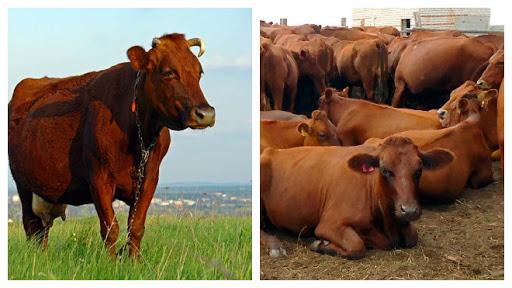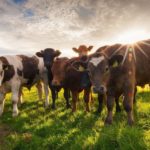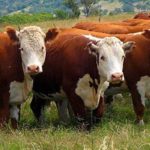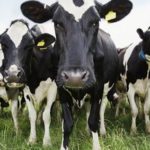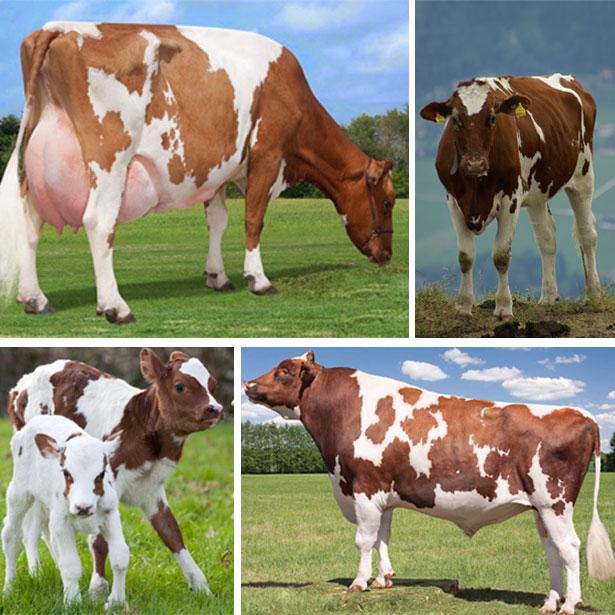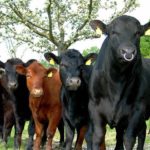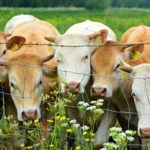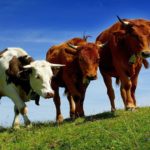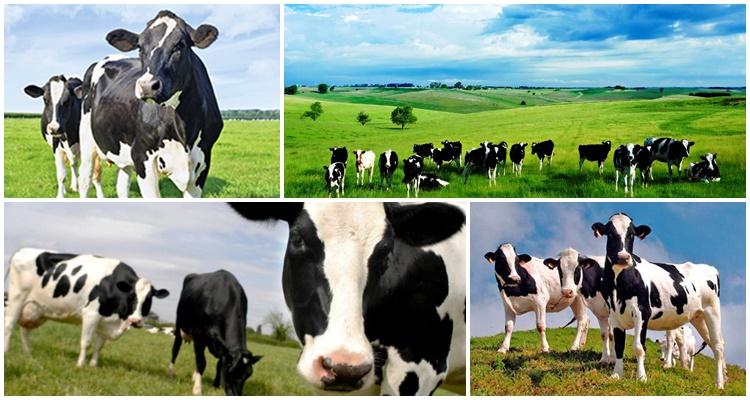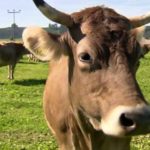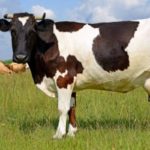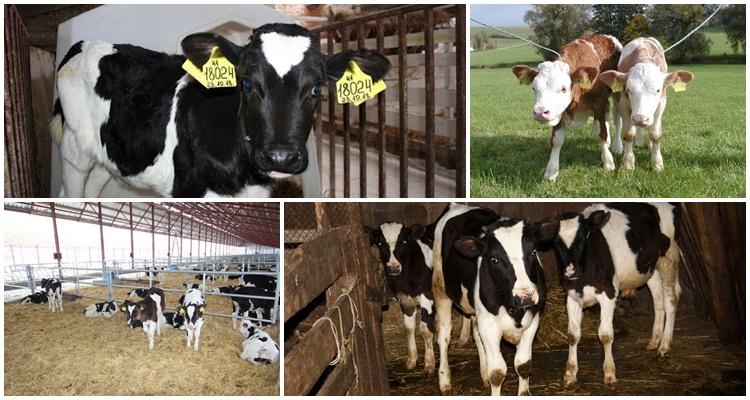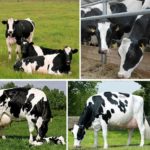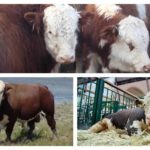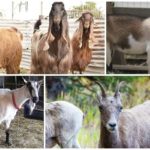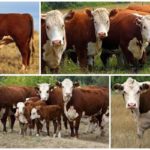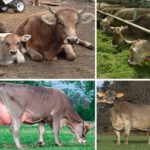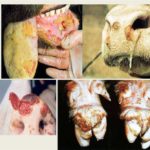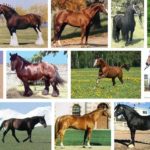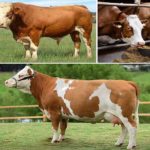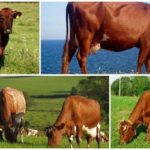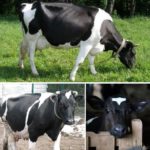Cattle breeding is practiced in different countries of the world. After all, cows are a source of milk and meat. Animals eat mainly grass and hay. The costs of their breeding and rearing are minimal (with pasture-stall keeping). But the profitability of cattle breeding is high. The main thing is to provide the cattle with proper care and quality feed.
What it is?
When they say “cattle,” they mean domesticated mammals of the Bovine subfamily, usually cows and bulls.Wild representatives - bison, buffalo, bison. Animals belong to the bovid family. Cattle have a large, dense build. Body length - 1.3-2 meters, height at the withers - 1.2-1.5 meters, weight - 350-1000 kilograms. Females and males have horns that grow throughout their lives and are never shed. There are breeds with hereditary polledness (hornlessness).
Cattle are ruminants with a 4-chambered stomach. They feed on grass in summer and hay in winter. They have 32 teeth in their mouth, with no upper incisors or canines. While grazing in a meadow, animals grab grass, tear it off, or bite it. Afterwards, the food is lightly chewed, then swallowed, regurgitated and chewed several more times. This is done to break down and microbially digest plant foods.
Animals are bred for milk, meat, and skins. There are dairy, meat, and dairy-meat breeds. One cow produces about 15-20 liters of milk per day. The period of productive use is 10-15 years. Slaughter yield of meat is 50 percent. At the age of 15-18 months, females are ready to mate. Their pregnancy lasts 277-285 days. This is 9 months. Usually the female gives birth to one, less often two or three calves. The weight of a newborn baby cow is 20-30 kg. Until 3-4 months, calves feed on their mother’s milk, and from 1 month of age they begin to nibble grass.
History of domestication
The wild ancestors of cattle are considered to be aurochs, which were found in Europe, Western Asia and North Africa. Unlike today's cows and bulls, they had a larger body and massive horns.
The first domestic animals were used for meat and as draft labor. This type of cattle had long horns. Relatively small short-horned animals originate from Celtic and Iberian cattle. Humpbacked cattle have appeared in Asian and African countries. The hump in such animals has developed to adapt to hot climates.
Domesticated animals were kept and bred in captivity. Over time, people learned to obtain milk from cows over a long period. Then natural selection began: more productive individuals were selected, and new breeds were created. This is how animal husbandry arose and the opportunity to obtain meat and milk at any time of the year.
Most domesticated animals were piebald, white or black. Over time, domestic cattle's body proportions changed. Those parts that were of greater value developed more strongly. This is how the modern cow appeared with a long body, a huge stomach, a short neck, a small head, small horns and a large rounded udder.
Why are cattle raised?
Cows and bulls are bred for milk, meat and hides. There is no country where these animals are not known and appreciated. Livestock farming is the main branch of agriculture. Thanks to cattle breeding, farms make a profit all year round, uninterruptedly providing the population with basic food products (milk, cheese, sour cream, beef).
The number of such animals in the world today is about 1.3-1.4 billion animals.
Cattle classification
There are the following classifications of cattle: craniological, economic, geographical, as well as by age and sex.
Craniological
Based on the shape and parameters of the skull, the following types of cattle are distinguished:
- narrow-browed (descended from the Asian tour) - Yaroslavl, Dutch, red steppe;
- broad-fronted (descended from the Asian aurochs with developed frontal bones) - Simmental;
- short-horned (from the European aurochs, having straight and short horns) - Kostroma, Jersey;
- short-headed (from the European aurochs, with a shortened facial part of the skull) - Hereford, Tyrolean;
- straight-horned (from the African aurochs, with a narrow head, short forehead, horns growing upward and curved in the shape of a crescent) - Kalmyk, Mongolian;
- polled (the main characteristic is the absence of horns) - hornless Northern European breeds.
By age and gender
Classification by gender and age:
- oxen - males over 3 years old castrated in infancy;
- cows are females with calves;
- bulls - uncastrated males over 3 years old;
- bulls - young males older than 3 months (but younger than 3 years);
- dairy calves - young animals from 14 days to 3 months, fed with milk;
- castrated bulls - castrated males from 3 months to 3 years;
- heifers are young females that have not yet calved.
Natural areas
Cows are bred in different countries and in different natural and climatic zones. Cattle are raised even in regions where there are no suitable pastures for grazing. Animals can be kept in stalls all year round. The largest number of cows and bulls is in India (about 270 million heads), slightly less in Brazil (153 million) and the USA (100 million). In Russia this figure is 45 million heads, in Ukraine - 3.5 million heads.
According to the geographical type of cattle there are:
- lowland (all dairy breeds);
- mountain (Schwyz, Tyrolean);
- steppe (red, Ukrainian steppe).
Dairy and meat and dairy farming develops in forest and forest-steppe areas of the temperate zone. Animals in these zones are kept in a pasture-stall type. Meat breeds are bred mainly in arid regions of the temperate and subtropical zones.
Hornless animals live in Northern Europe. Humpback cattle dominate the tropics and subtropics.
Main breeds
Cattle are divided into the following main breeds:
- Meat. There are British (Hereford, Shorthorn), French (Saler, Limousin), Italian (Marchigian, Kian), Asian (Kalmyk, Kazakh, gray Ukrainian) and hybrid origin (Santa Gertrude, Brangus).
- Dairy. The most popular breeds are Yaroslavl, Holstein, Ayrshire, Jersey, and Guernsey.
- Combined (meat and dairy). Popular species are Alatau, Kostroma, Bestuzhev, Simmental.
Subtleties of breeding
Cattle can be kept in pasture, pasture-stall or stall housing. Animals are raised by farms and people living in rural areas. The main thing when breeding cattle is to provide livestock with feed all year round and create acceptable living conditions for them.
Cows eat mainly grass and hay. In summer, it is recommended to graze animals on pasture. Desirable grasses are legume-cereal type, 15 cm high. One cow eats about 55 kilograms of vegetation per day. Drinks almost 30-40 liters of water. For the winter, one animal needs to prepare about 0.5 tons of hay.
During the cold season, cattle must be kept indoors. Cowsheds are equipped with mangers, feeders, drinking bowls, and the temperature is maintained at least 15 degrees Celsius. Cows are milked 2-3 times a day. One female produces about 15-20 liters of milk per day.
Diseases
Typically, farmers raise those breeds of cattle that are most adapted to the climate of a particular region and have lived in a particular area since time immemorial. Such animals are not susceptible to colds.
The health of cattle depends on the conditions and quality of feed. Errors in care and feeding can lead to mastitis and digestive problems. Animals are protected from infectious diseases at an early age through vaccination. Cattle are vaccinated against anthrax, foot and mouth disease, rabies, and pneumonia of viral origin.

